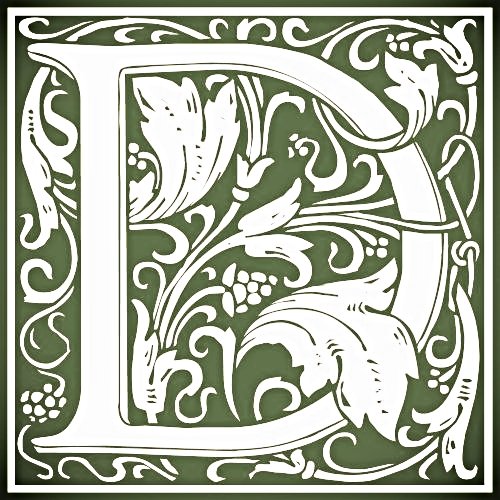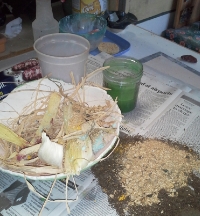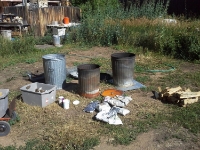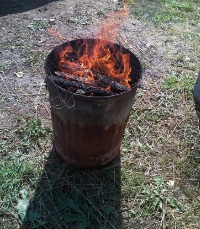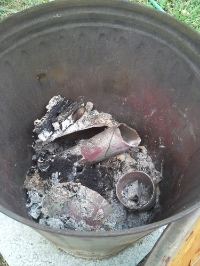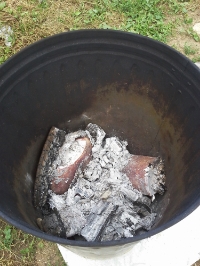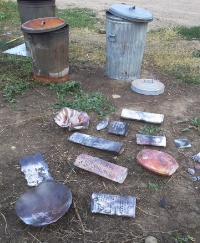WITH PIT-FIRED POTTERY, nature is as much the artist as the potter is herself. The potter has limited control over the outcome of her work. She makes the form, adds the choice of compost to impart color, and places the pot in a tangle of wood. Nature takes over from there; the fire, flames, swirling air, heat, smoke, ash and cinders all colliding and conspiring to finish what the potter started. It’s nature, ultimately, that decides which colors develop, how they’ll intertwine and where they’ll take shape on the pot. It’s nature that marks each pot with a mystery that will never be rewritten. And it’s nature, playing with chance, that even determines if the pot survives the tumbling and settling of wood as the flames do their work. With pit-fired pottery, the potter participates, but the ultimate creator of the finished work is nature—who’s a mighty fine artist herself.
I HELD MY FIRST FIRE in April, 2013 up in the Boulder foothills in a pit dug into what used to be a horse corral. The experience was the culmination of hours of research, weeks of preparation and months of dreaming. To be honest, I didn’t really know what I was doing but, as a first-timer, I was pretty happy with the results. Today, because of the hazards and risks (and frankly, the anxiety!) of burning open fires in Colorado, I fire most of my pots in either 60-gallon oil drums and/or 30-gallon trash cans. Sometimes, though, I use a pit at a local pottery workshop. Other times I use my fireplace. Where there is fire, I'm usually trying to throw a pot into it.
Nowadays, I can start the fire in the morning and unload by dinner time; near-instant gratification in pottery world time. Here’s a video recounting my first pit fire experience.
